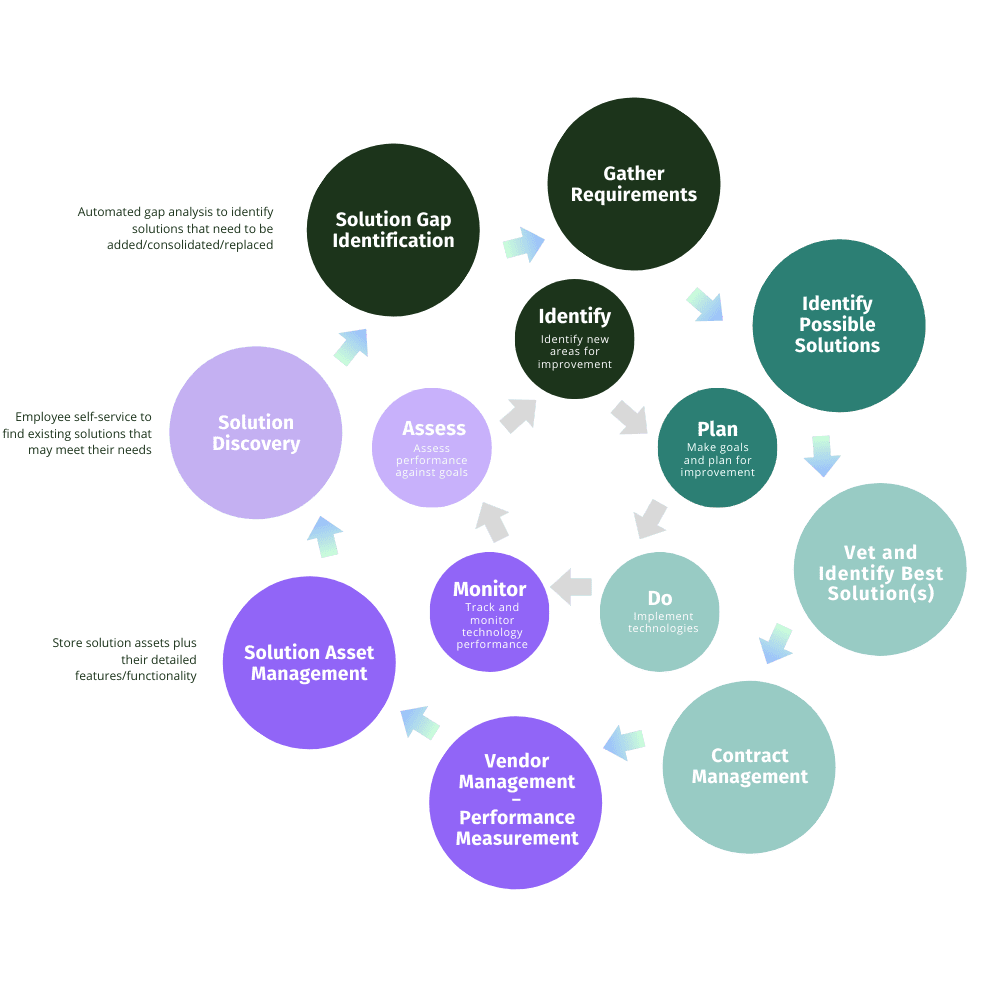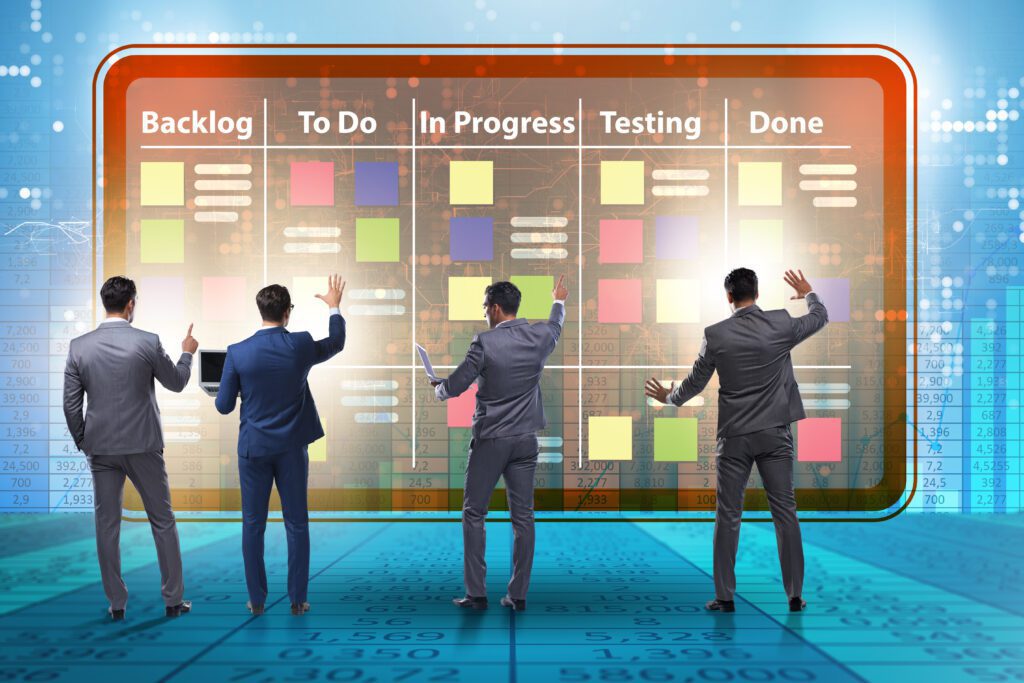Embracing Digital Transformation to Stay Competitive
In today’s rapidly evolving digital landscape, organizations face the challenge of embracing digital transformation to stay competitive. However, it’s not enough to simply implement new technologies. Organizations need to adopt a holistic approach that encompasses the entire digital transformation journey. This is where Digital Transformation Lifecycle Management comes into play. In this blog post, we will explore the concept of Digital Transformation Lifecycle Management and how Olive, an AI-powered technology evaluation platform, can help IT Leaders and consultants drive continuous improvement throughout the process.
What is Digital Transformation Lifecycle Management?
Continuous Improvement through Innovation
We refer to Digital Transformation Lifecycle Management as the strategic and systematic approach to managing the entire lifecycle of digital transformation initiatives within an organization. Digital transformation lifecycle management is a strategic approach to managing the entire lifecycle of digital initiatives within an organization.
It encompasses the processes of identifying technology needs, evaluating potential solutions, implementing selected technologies, and continuously improving and optimizing digital initiatives. Digital Transformation Lifecycle Management provides a structured framework that ensures digital transformation efforts are aligned with the organization’s goals, deliver measurable value, and drive continuous improvement.
Why is Digital Transformation Lifecycle Management Important?
Holistic View of Digital Initiatives
Digital transformation is not a one-time event but an ongoing journey. Lifecycle management offers a holistic view of the entire transformation process, enabling organizations to make informed decisions, prioritize initiatives, and align resources effectively.
Strategic Alignment
By integrating digital initiatives with the organization’s overarching goals and vision, lifecycle management ensures that every transformation effort contributes to the long-term success and competitiveness of the business.
Efficient Resource Allocation
With limited resources, organizations need to prioritize and invest in the right technologies. Lifecycle management provides a structured approach to evaluate and compare potential solutions, optimizing resource allocation and minimizing risks.
Continuous Improvement
The digital landscape is constantly evolving, and organizations must adapt to stay relevant. Lifecycle management fosters a culture of continuous improvement, enabling organizations to assess the impact of digital initiatives, identify gaps, and refine strategies to drive ongoing success.
Risk Mitigation
Implementing new technologies inherently involves risks. Lifecycle management allows organizations to identify potential risks, assess their impact, and develop mitigation strategies. This proactive approach minimizes disruption and ensures a smooth transition throughout the transformation journey.
Stakeholder Collaboration
Successful digital transformation requires collaboration across different stakeholders within an organization. Lifecycle management facilitates communication, collaboration, and alignment among business units, IT teams, and decision-makers, fostering a shared understanding and commitment to the transformation goals.
Data-Driven Decision-Making
Lifecycle management relies on data and insights to drive decision-making. By collecting and analyzing relevant data throughout the transformation process, organizations can make data-driven decisions, measure success, and identify areas for further improvement.
Agility and Flexibility
The digital landscape is dynamic, and organizations need to be agile and adaptable. Lifecycle management provides the flexibility to adjust strategies, adopt emerging technologies, and seize new opportunities, ensuring that organizations stay ahead of the curve.
Scalability and Sustainability
As organizations grow and evolve, their digital initiatives need to scale and be sustainable. Lifecycle management helps organizations design and implement scalable solutions, ensuring that digital transformation efforts can accommodate future growth and evolving needs.
Competitive Advantage
In today’s digital age, organizations that effectively manage their digital transformation lifecycle gain a significant competitive advantage. By embracing innovation, leveraging emerging technologies, and continuously improving digital initiatives, organizations can differentiate themselves and thrive in a rapidly changing market.
Download the Whitepaper!
Olive, an Agile Approach to Digital Transformation Lifecycle Management and Continuous Improvement
Within the technology evaluation, vendor selection and vendor management functions of the business, implementing/considering/adopting a digital transformation lifecycle management approach can help organizations manage their technology needs, compare vendors, and find the right solutions that, efficiently and effectively, that drive continuous improvement.
Digital Transformation – Continuous Improvement Lifecycle

Olive, an AI-powered platform that streamlines internal technology evaluations, offers a comprehensive solution that guides helps organizations achieve continuous improvement through their digital transformation initiatives. As your organization’s technology needs evolve, your organization needs to evolve with them. Olive can help you monitor your digital assets and automatically identify where you have overlaps and gaps in technology.
This helps the organization and C-suite execs holistically view and consider all transformation needs and initiatives to create the “future of work” for the org.
Additionally, the platform continuously monitors the selected vendor solutions to ensure its continued alignment with organizational needs as these needs change and evolve over the journey. By leveraging Olive’s platform, companies can realize a digital transformation lifecycle management approach and achieve continuous improvement and efficiency in their technology sourcing and implementation.





